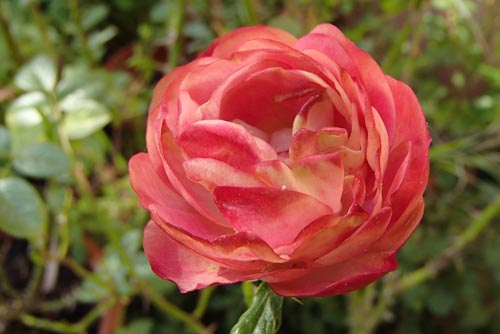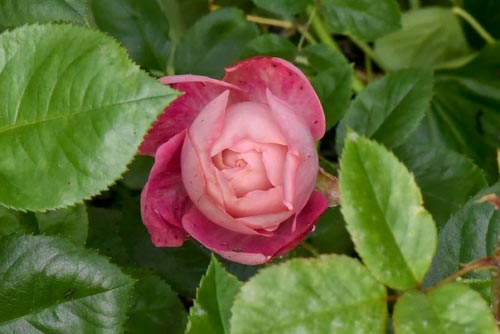Rose Acropolis (Acropolis)
A peculiar, in its own way unpredictable variety, which gardeners half-jokingly call "chameleon". Why so - now we will find out!

How was it created?
The biography of this species is simple and straightforward. It was presented in France at the 2002 exhibition, which was called “Acropolis”. The new flower was presented to the audience by the Provence rose company Meilland International, better known simply as Meiland. The commercial name of the new variety is MEIcrado, and in Europe, under this name, the rose is known even more than Acropolis.
Description of appearance
The plant belongs to the floribund group. The bush is medium in size, from 70 cm to a meter in height (but the upper limit is rarely observed). The leaves are also medium-sized, light green in color.
Like any rose, this one has the main advantage - its flowers. Their "highlight" lies in the fact that the color of the petals changes not only depending on age (this trait is typical for many roses), but also on growing conditions: soil and weather.
The flowers that have just blossomed, which, by the way, resemble a peony in their shape, have a pink color. But soon it begins to change, a delicate coffee shade appears in it. If the weather is dry and warm, "coffee" is strongly expressed, up to ashiness. But on cool, rainy days, the pinkness remains, and even intensifies along the edges of the petals.

Just before the withering of the flower, a light greenery appears in its gamut, successfully combined with a beige shade. Here is such a "chameleon" - rose Acropolis!
These flowers, elusive in their range, usually grow in small clusters, 3-5 pieces each. The diameter of an individual flower is about 5 cm, the number of petals is about two to three dozen. The bloom is repaired; between the two main waves, the appearance of separate clusters is also observed.
Users note that the flowers of this variety stay on the bush for an unusually long time, but their smell is faint, barely perceptible. However, its intensity also varies somewhat depending on the weather.
Features of agricultural technology and use
Rose Acropolis is considered moderately resistant to common diseases, its frost resistance, according to the US Department of Agriculture (USDA), allows cultivation in zones 6 to 9. It is often grown for cutting, using an unusual color scheme of the bouquet. It is also popular as a curb plant, as an element in landscape green groups (but in this case, the change in its color must be taken into account).
If you plan to start this variety on your site, keep in mind that it may look completely different from the photo in some advertising brochure or even at the dacha of your friend living in another city. We have indicated the reasons above. However, such unpredictability can only spur a true flower lover!









Only after getting to know Acropolis live, I finally understood what color in the old days was called "rose ash". Therefore, sympathy for the variety did not work out. Although in the balls of buds, the rose is charmingly sweet and beautiful. At the very beginning of the dissolution, these are juicy crimson with milky pearlescent gleams of color. The buds are not large, but the size is compensated by their number. However, further the shades of dirt begin to dominate. In the greening stage, the flowers look lifeless, as if they were carelessly twisted from paper.Although I liked that, fading, they are kept in a pile and can be removed completely with one touch. There is no smell at all. And it is very sick with various spots. Along with other varieties, this rose is simply a poor, faded relative.
I have been growing roses for many years, and Acropolis was probably the main disappointment for me. I have never met such an incomprehensible flower - neither before nor after! The flower is small, the color has faded from the very beginning, and only as it matures or as it burns out in the sun, it becomes even worse (looks like an old washed rag). Flowers do not tolerate rain at all - they rot and "snot". Diseases on the bush cling to everything that only exists in my region. It hibernates, however, not bad, but it did not save the rose - I threw it away (I didn’t even give it to anyone - it’s a shame to offer it).